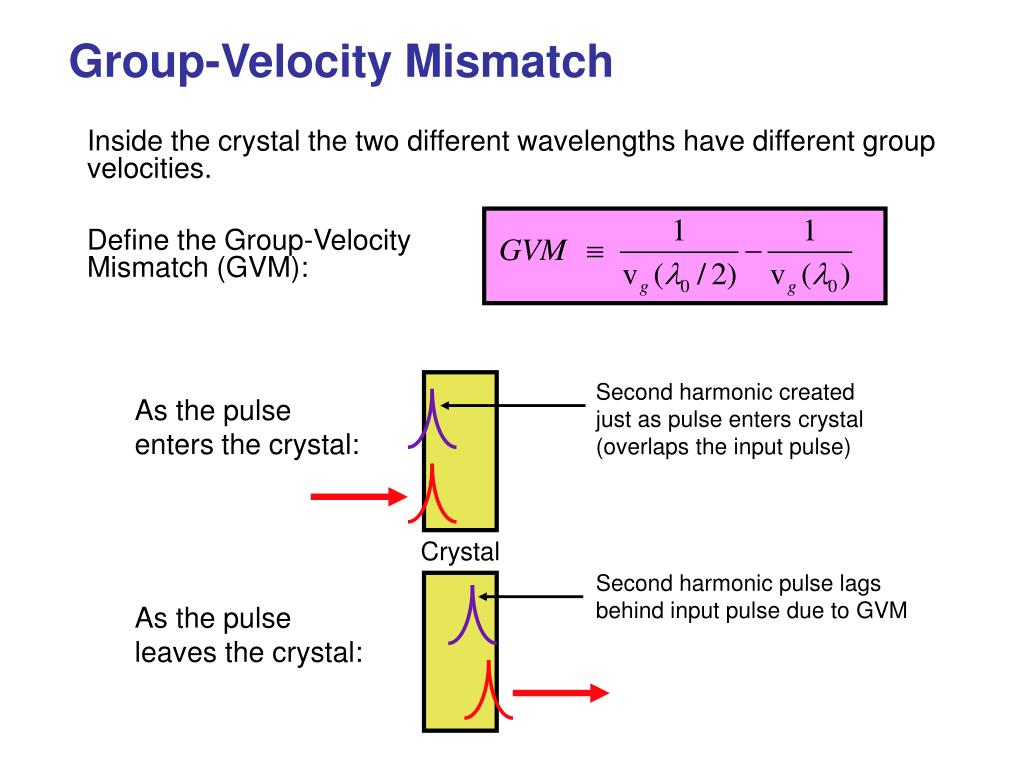Contents

Source: SlideServe
The Role of Group Velocity Mismatch in Ultrashort Pulse Propagation
Understanding Group Velocity Mismatch
Group velocity mismatch is a phenomenon that occurs when optical pulses with different optical frequencies travel through a medium at different speeds. This difference in velocities can cause initially overlapping pulses to become temporally separated after some distance of propagation. Group velocity mismatch can also manifest in birefringent media for different polarization directions.
Quantifying Group Velocity Mismatch
The group velocity mismatch (GVM) is defined as the difference between the inverse group velocities of the pulses and is measured in seconds per meter. Mathematically, it can be expressed as ${rm{GVM}} = frac{1}{{{upsilon _{{rm{g1}}}}}} – frac{1}{{{upsilon _{{rm{g2}}}}}} = {left. {frac{{partial k}}{{partial omega }}} right|_1} – {left. {frac{{partial k}}{{partial omega }}} right|_2}$.
Implications of Group Velocity Mismatch
Group velocity mismatch, also known as temporal walk-off, is crucial in nonlinear frequency conversion with ultrashort pulses. It can significantly impact the efficiency of frequency conversion processes, especially for femtosecond pulses. The phenomenon limits the spectral range for phase matching, affecting conversion efficiency for short pulses.
Applications and Considerations
Group velocity mismatch is essential in various applications, such as Raman amplification in optical fibers and nonlinear frequency conversion. While it can pose challenges in maintaining high conversion efficiency, it can also be leveraged for wavelength tuning and pulse shortening in optical parametric oscillators.
Conclusion
Understanding group velocity mismatch is vital for optimizing the performance of ultrashort pulse systems. By considering its effects and applications, researchers and engineers can effectively manage and utilize this phenomenon in a variety of photonic technologies.

Source: SlideServe
Feel free to comment your thoughts.



